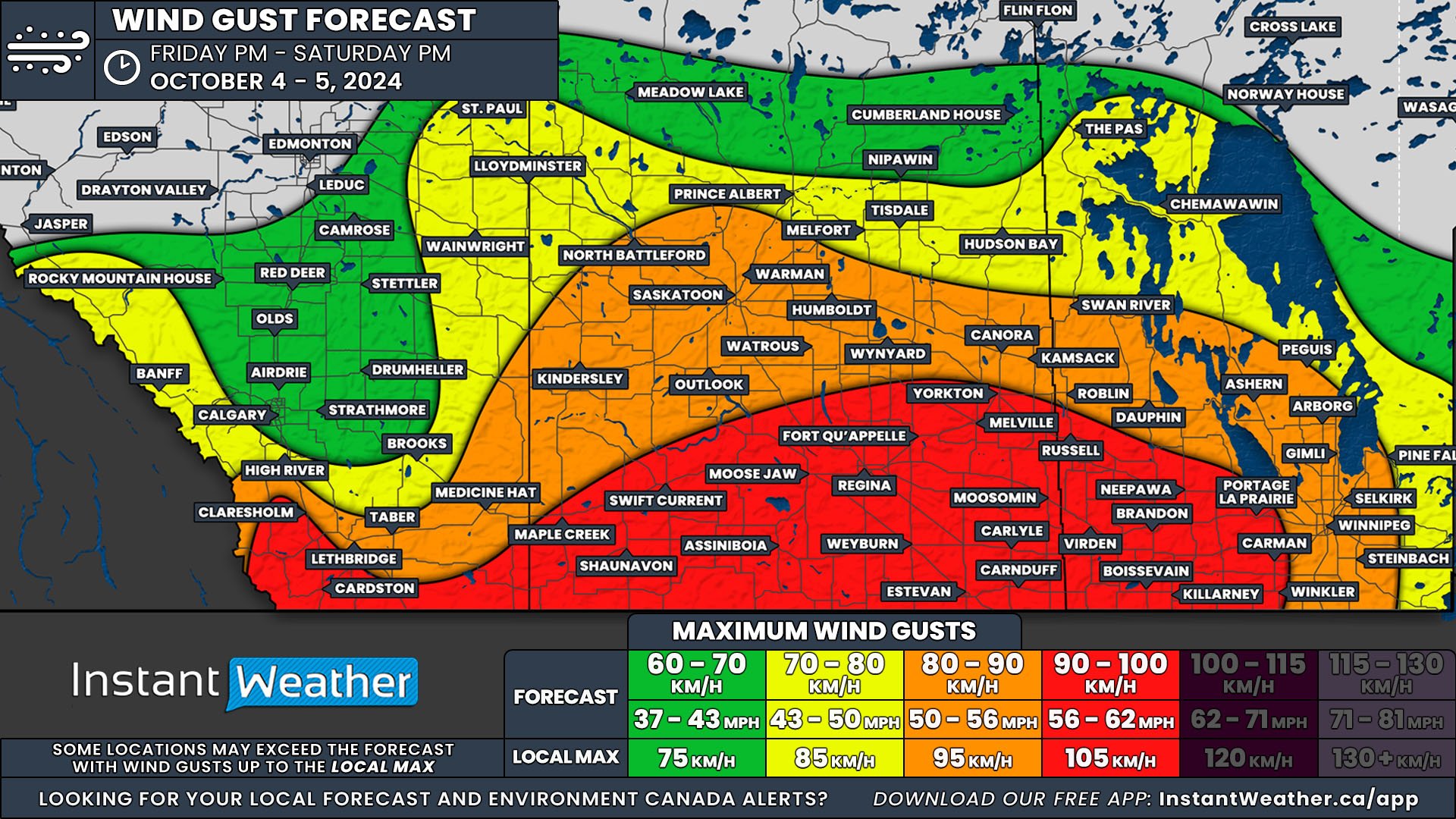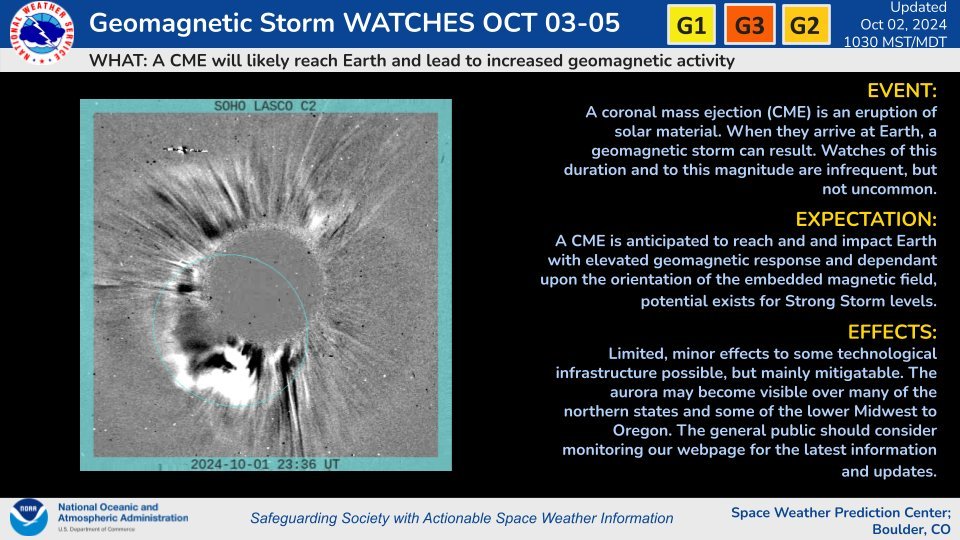Early October Windstorm Will Blow Across the Prairies This Weekend
/NOTE: YOU CAN CLICK ON THE MAP TO OPEN A ZOOMABLE IMAGE
The first weekend of October is shaping up to feel like true fall across the Prairies, with a strong low-pressure system bringing powerful wind gusts of 70-100 km/h. These winds are set to begin later this afternoon and continue throughout the day on Saturday. The prolonged high winds will likely strip many trees of their remaining leaves and could pose a serious hazard to traffic, especially for transport trucks and trailers
The windstorm will kick off in the Alberta Foothills this afternoon, quickly spreading across Southern Alberta as the evening progresses. Expect pockets of gusts exceeding 90 km/h along the QE2 corridor south of Calgary and near the American border. These intense gusts won’t last long in Alberta, though, as the winds are expected to ease overnight.
The storm will move eastward into Saskatchewan through the evening and overnight hours. By morning, the low-pressure centre will stall and the winds will intensify, leading to widespread gusts approaching, and in some areas surpassing, 100 km/h across much of Southern Saskatchewan. These fierce winds will persist into the late afternoon and early evening.
The system will push into Manitoba by late Saturday morning, with strong winds continuing throughout the day before gradually subsiding. The strongest gusts, reaching over 90 km/h, are expected in the southwest corner of the province, but many parts of Southern Manitoba will still experience significant gusts.
Temperatures will cool down a bit following this windstorm, serving as just a taste of the fall storms we can expect as the season progresses.

























